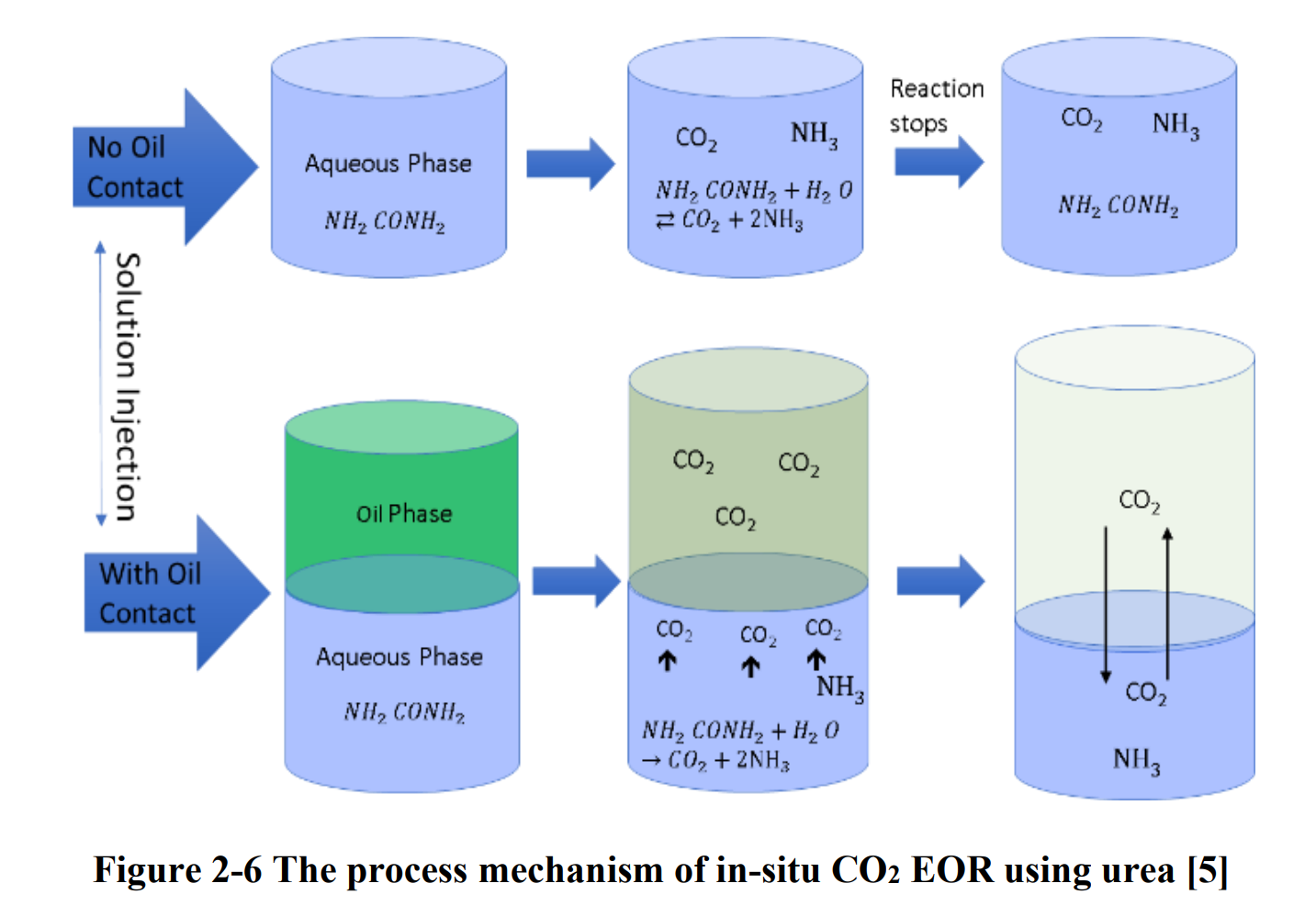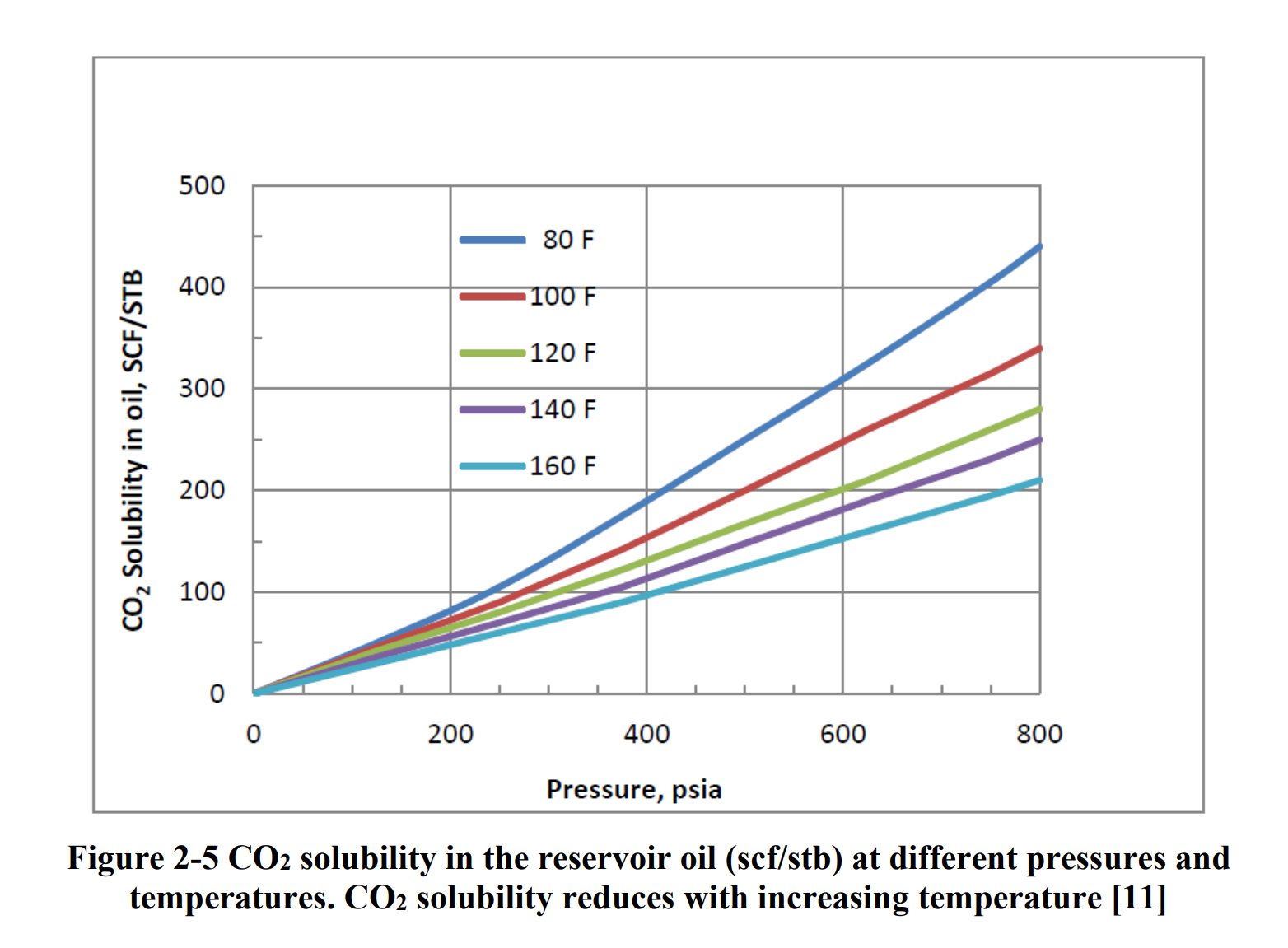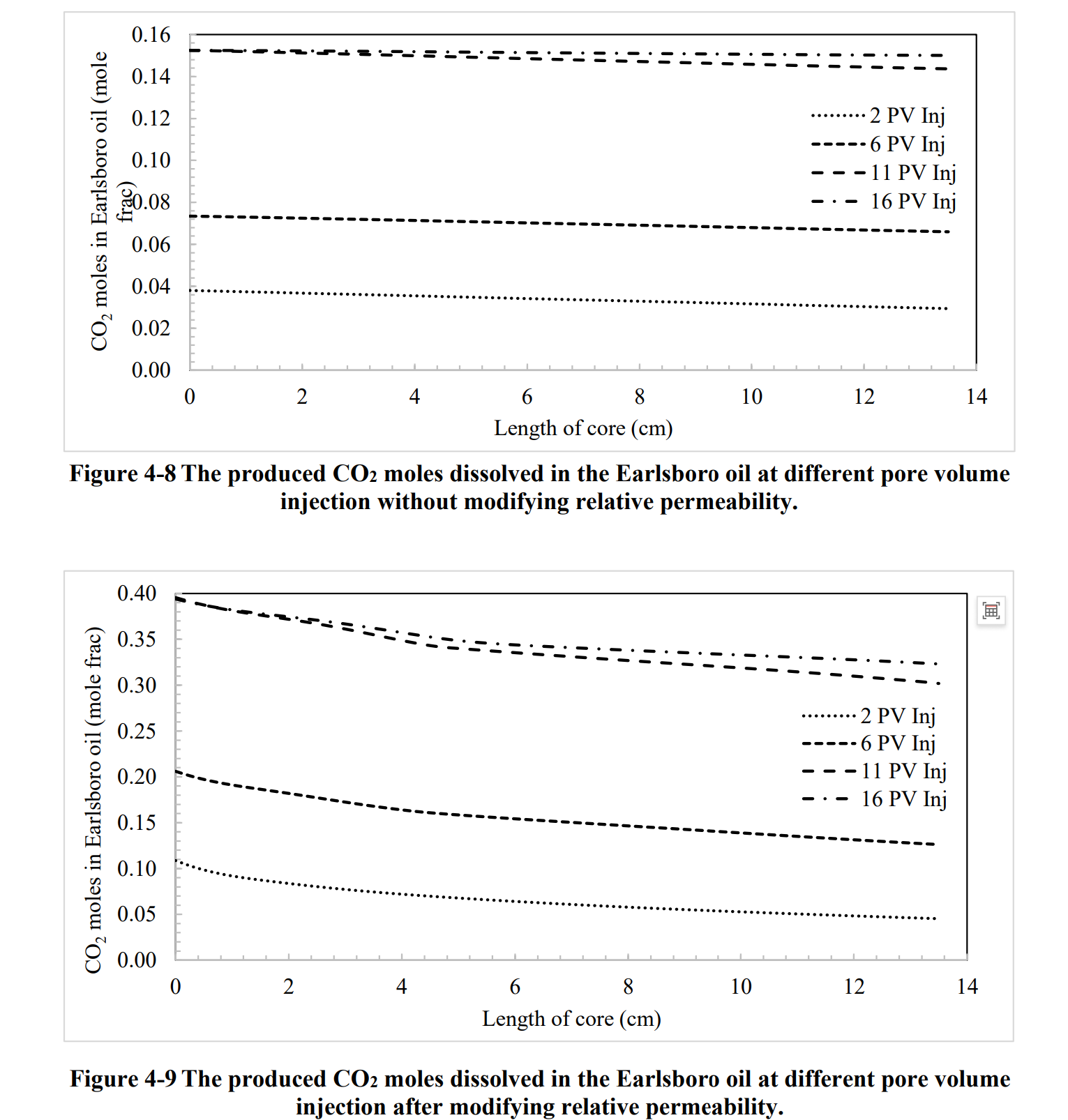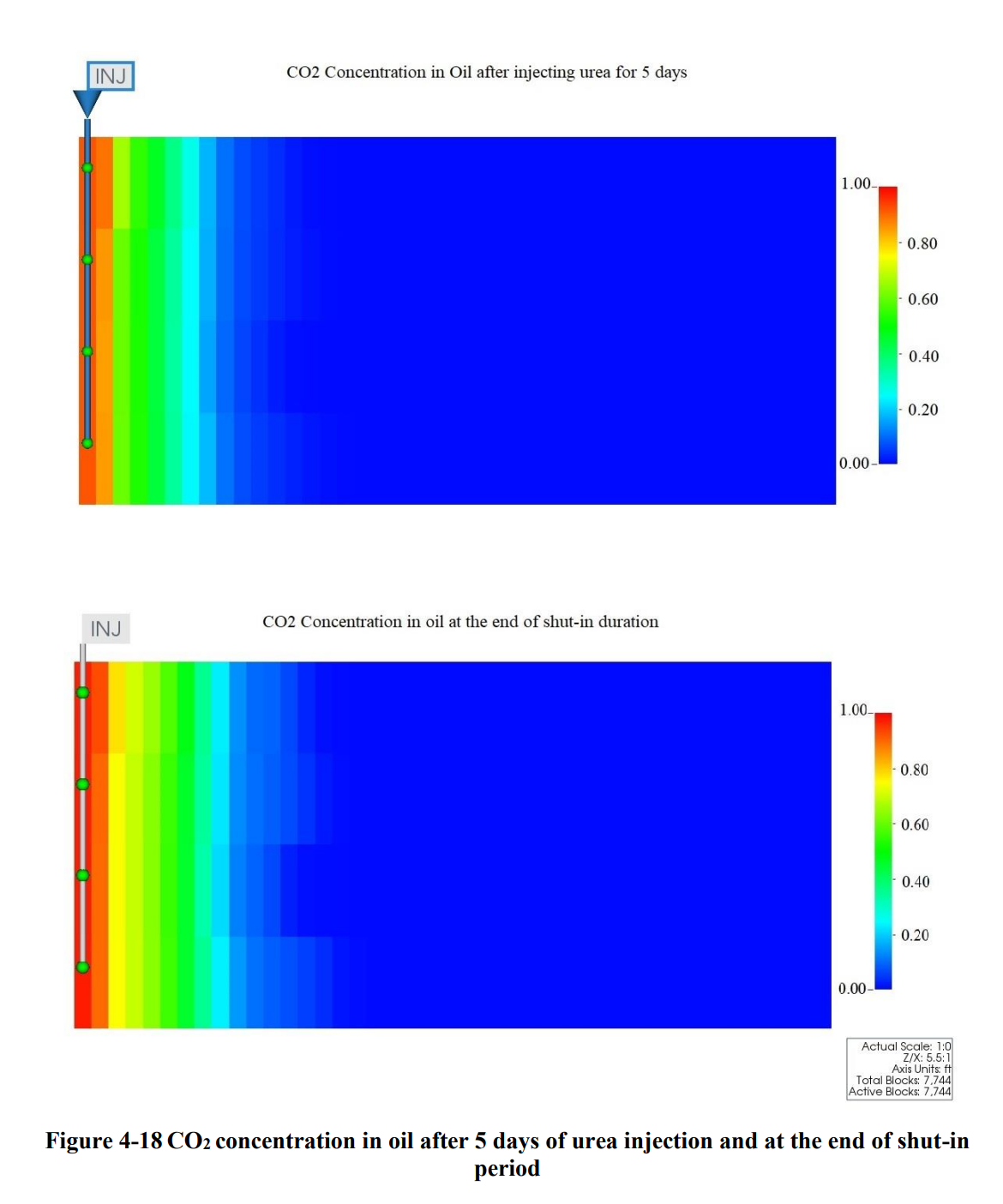NUMERICAL MECHANISTIC STUDY OF IN-SITU CO2 EOR – KINETICS AND RECOVERY PERFORMANCE ANALYSIS
原位二氧化碳提高采收率(In-Situ CO₂ EOR,简称ICE)技术通过在储层中注入尿素等化学物质生成CO₂,从而解决了传统CO₂ EOR中CO₂来源和运输的问题。本研究通过数值模拟方法,对ICE技术中的协同机制进行了量化分析,包括尿素水解反应动力学、油膨胀和黏度降低、界面张力(IFT)降低等机理。研究建立了1D和3D数值模型,拟合了实验室实验数据,并评估了不同操作参数(如注入速度、尿素浓度、储层温度等)对采收率的影响。
结果表明,油膨胀和黏度降低的协同机制可使采收率提高6.4%至18.0%,而IFT降低和润湿性改变的协同机制可使采收率提高24%至38%。本研究为ICE技术的现场应用提供了理论支持和优化方案。
CMG软件应用情况
在本研究中,CMG-STARS软件被用于模拟和分析原位二氧化碳提高采收率(ICE)技术中的流体流动和相行为。研究中使用了CMG-STARS的内置过程工作流来模拟碱/表面活性剂/聚合物注入的协同机制,并通过EOS模型计算了不同油品在不同压力和温度下的相行为、摩尔体积和流体性质。此外,CMG软件还用于构建1D和3D数值模型,评估不同操作参数对采收率的影响,并通过敏感性分析优化了尿素注入策略。




Abstract
The success of supercritical CO2 Enhanced Oil Recovery (EOR) cannot be duplicated if the cost of CO2 transposition and processing becomes prohibitive. Research results of the in-situ CO2 EOR (ICE) approach offered a potential technology for many waterflooded stripper wells that lack access to affordable CO2 sources. Previously the ICE synergetic mechanisms were only qualitatively attributed to oil swelling and viscosity reduction due to the preferential partition of CO2 into the oleic phase. This study aims to quantify the contributions to recovery factors from several plausible mechanisms with numerical modeling and simulation. First, urea reaction was modeled as the CO2 generating chemical decomposing to CO2 and ammonia under the reservoir conditions. The CO2 partitions into oil, which leads to the reaction continuation to generate more CO2. The resulting ammonia largely left in water may further react with certain oil components to generate surfactant, thus decreasing the oil/water interfacial tension (IFT). It is expected that the oil containing CO2 also has a lower IFT with water. The reaction kinetics under different temperatures were incorporated into the model. A numerical model featuring the synergetic mechanisms was built, including stoichiometry and kinetics of urea reaction, oil swelling effect, oil viscosity reduction, and IFT reduction effect on the relative permeabilities. I matched previous laboratory data for three different oils including dodecane, Earlsboro oil, and DeepStar oil, the same oils used in laboratory studies. The phase behavior was modeled with the Equation of State (EOS) under different mole fractions of CO2. The estimated reduction of oil viscosity was calculated, 79% for Earlsboro oil, 91% in DeepStar oil, and 76% in dodecane oil. The oil swelling factors ranged from 10% to 50% in the three lab models, which translate to the recovery factor of oil. Then I modified the endpoints of relative permeability to account for the recovery contribution to the IFT and viscosity reduction. The impact of reaction kinetics on oil swelling and recovery factor was also determined, and they are not numerically close to reaction kinetics which were used in the lab cases. The study concluded that the incremental recovery due to oil swelling ranges between 6.4% and 18.0%, and the from 24% to 38% is due to IFT and viscosity reduction for all the cases. The relative permeability and urea reaction kinetics remained the most uncertain parameters during history matching and modeling the ICE synergetic mechanisms. Later on, I upscaled the lab-scale model to a 3D sector model which features reaction kinetics, multi-components, and sensitivity study on selected parameters. To my knowledge, this is the first in modeling and differentiating the individual contributions on recovery from the synergetic mechanisms of ICE. The success of this model will tremendously reduce the potential laboratory experiment efforts and significantly improve the modeling capability in field application of the ICE technology. The developed model can be easily upscaled and retrofitted for other applications such as development planning and production forecast for ICE.
作者单位
美国俄克拉荷马大学Mewbourne石油与地质工程学院
